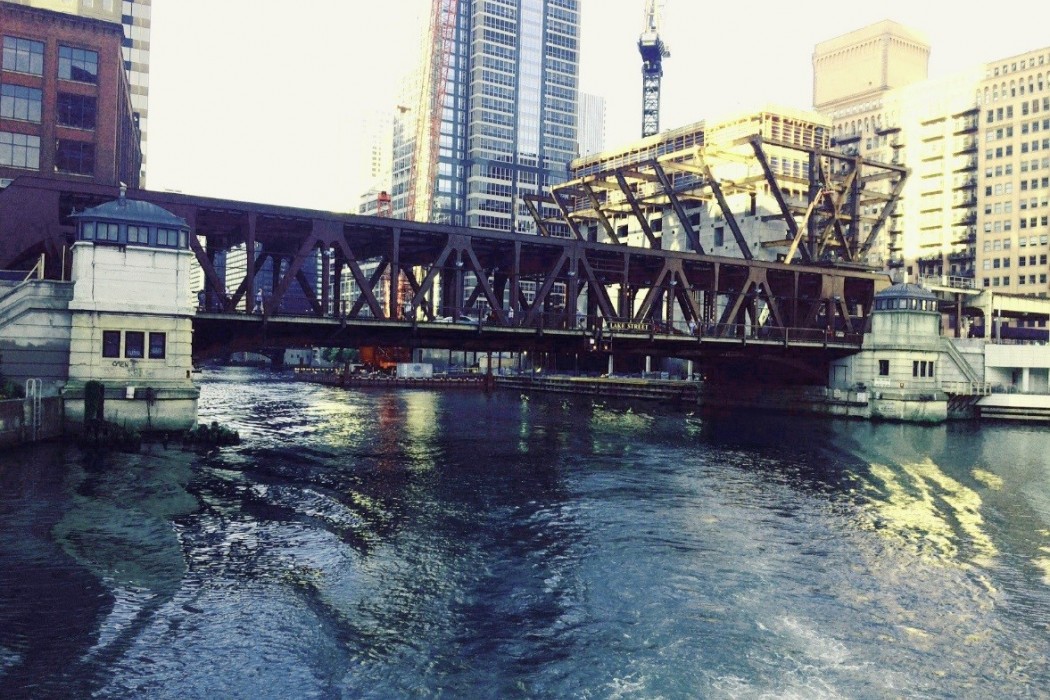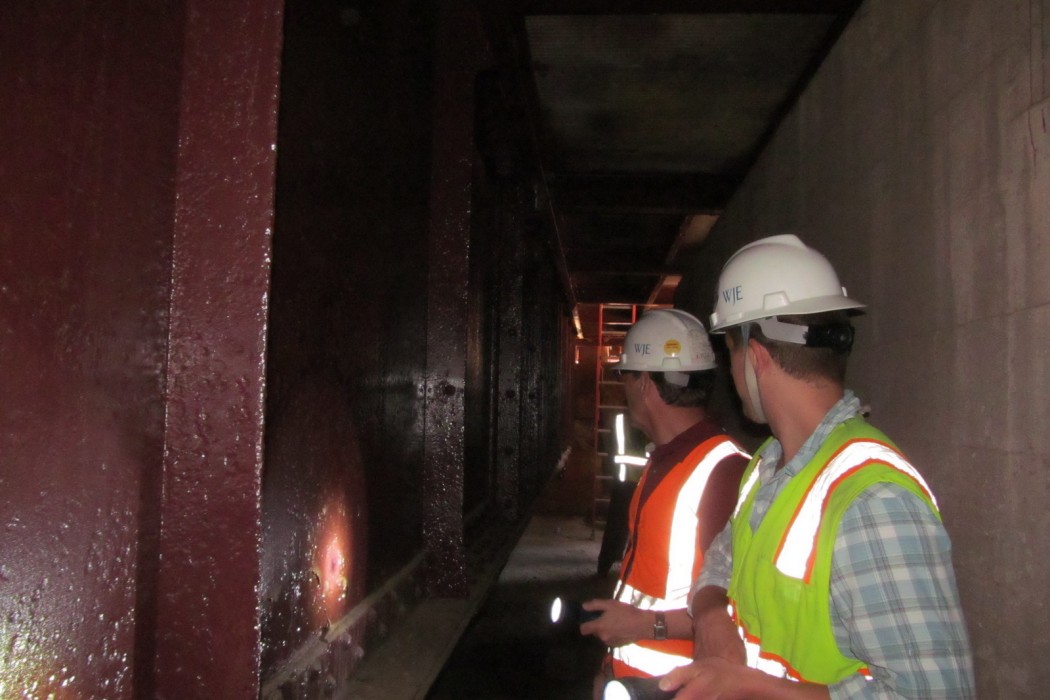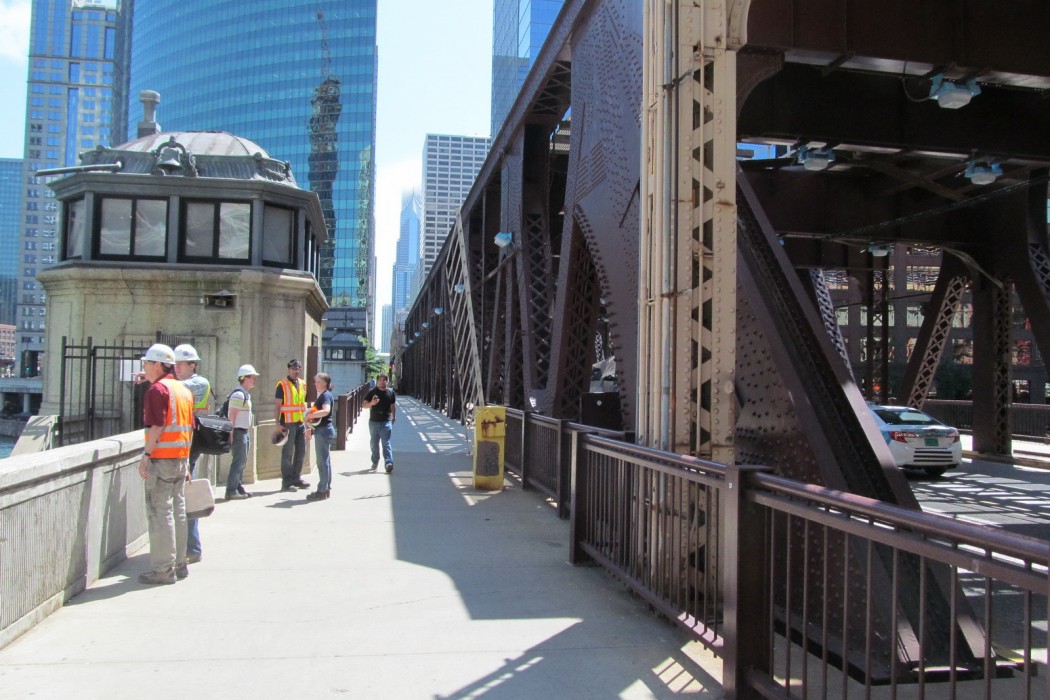WJE PROJECTS
Lake Street Bascule Bridge
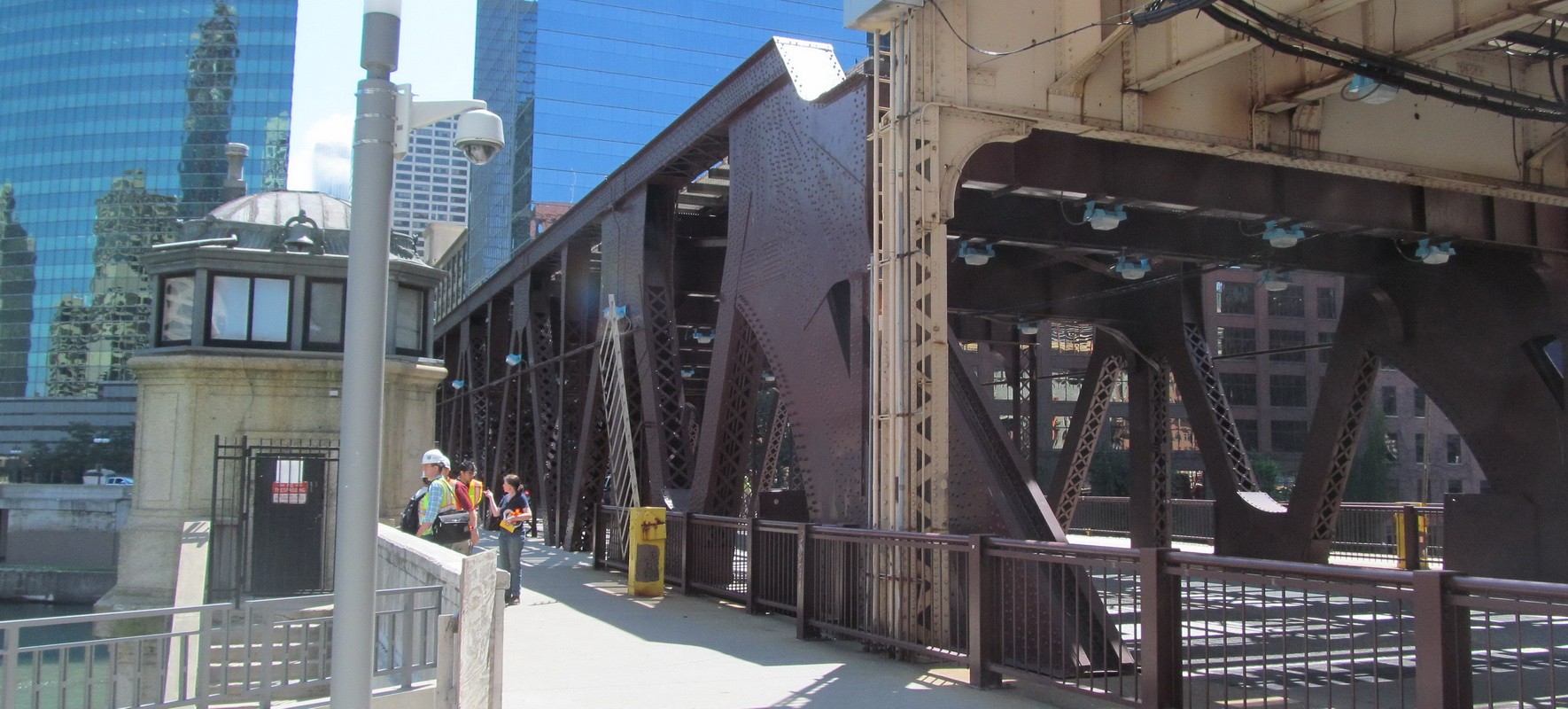

CLIENT |
HNTB Corporation and Chicago Department of Transportation |
LOCATION |
Chicago, IL |
Structural Evaluation
The steel superstructure of the Lake Street Bridge was to be lifted to facilitate repair of some of the deteriorated steel elements. The lifting concept involved construction of two shoring towers to support and lift each bridge leaf. The shoring towers were to be built inboard of the main bridge trusses and supported from below on the concrete pit structure below the bridge bearings. The Chicago Department of Transportation tasked WJE with evaluating the structural capacity of the pit structure and its ability to support the loads from the shoring towers.
BACKGROUND
The Lake Street Bridge is a double-deck bascule bridge that was constructed circa 1914. The bridge supports two lanes of traffic on its lower level and two CTA tracks on its upper level. The bridge superstructure is composed of two bridge "leafs" that cantilever from the bridge substructures on each side of the river. Each leaf is composed of two identical main trusses that support transverse beams that carry the roadway and track loading. The bridge substructures consist of a cast-in-place reinforced concrete pit supported on four concrete caissons at each end of the bridge.
SOLUTION
WJE engineers performed a two-part analysis to evaluate the ability of the bridge substructure to carry the loads from the proposed shoring towers. First, the bridge superstructure was analyzed to determine the forces that would be applied to the substructure from lifting and live loads. Then, the substructure was analyzed for the effects of these loads and in situ loads from the surrounding soil and water. As part of the superstructure analysis, a two-dimensional finite element model was constructed of one of the main bridge trusses to facilitate determining the reactions at the bridge supports. A three-dimensional finite element model was used to analyze the bridge substructure. Loads obtained from the superstructure analysis were applied to the substructure model at the proposed shoring tower locations and superstructure bearing points. The capacity of the substructure was assessed based on the guidance of the ACI code. Evaluation showed the existing pit slab not capable of resisting the heavy concentrated loads applied from the showing towers because there is no reliable load path from the slab into the caissons. WJE engineers provided several alternate shoring options with installing new micropiles recommended to be the most advantageous. Also suggested was consideration to repairing the existing steel elements in place.
RELATED INFORMATION
-
 Our knowledge of bridge performance is supported by technical expertise in structural... MORE >Services | Bridge Engineering
Our knowledge of bridge performance is supported by technical expertise in structural... MORE >Services | Bridge Engineering -
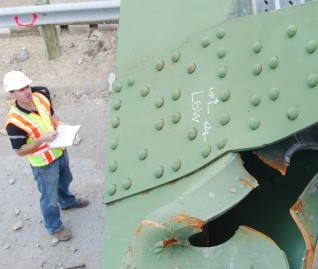 When the integrity or condition of a structure is in question, clients rely on us for answers MORE >Services | Structural Engineering
When the integrity or condition of a structure is in question, clients rely on us for answers MORE >Services | Structural Engineering -
 We provide clients with accurate, actionable answers through a spectrum of in situ load testing... MORE >Services | Structural Load Testing
We provide clients with accurate, actionable answers through a spectrum of in situ load testing... MORE >Services | Structural Load Testing



































